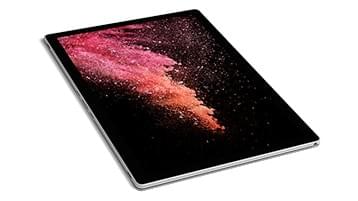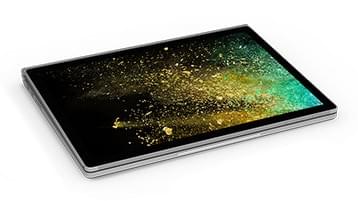


The Dark Knight Rises
As The Dark Knight Rises brings a close to Christopher Nolan’s staggeringly ambitious Batman trilogy, it’s worth remembering that director chose The Scarecrow as his first villain—not necessarily the most popular among the comic’s gallery of rogues, but the one who set the tone for entire series. With his crude potato-sack mask and fear-inducing toxins, The Scarecrow, a “psychopharmacologist” at an insane asylum, acts as a conjurer of nightmares, capable of turning his patients’ most terrifying anxieties against them. He’s an illusionist who relies on his victims to complete the illusion; without that unwitting collaboration, he has no power at all.
With The Dark Knight Rises, Nolan expands on a comprehensive nightmare of the early 21st century, again playing The Scarecrow to the many millions whose anxieties complete the illusion. He’s made a horror trilogy in the guise of summertime action-adventure, a mind-blowing pulp allegory for America’s worst-case scenario: Terrorist networks, the surveillance state, loose nukes, kangaroo courts, all-out class warfare, the grim threat of fascism on one end and anarchy on the other. And at its center is an all-too-human hero whose courage and integrity masks a crippling uncertainty over whether he can beat back the darkness.
the dark knight rises full movie
the dark knight rises movie downloadThough it introduces another round of new characters, including two antagonists in Bane and Catwoman, The Dark Knight Rises impresses most in the way it integrates the mythology of Batman Begins and The Dark Knight into a larger whole. Where the previous two might have seemed like separate but related units, the third reveals a master plan that goes beyond just another expensive mission for our caped crusader. In those early encounters with Ra’s al Ghul and his League Of Shadows in Batman Begins and the chaos stoked by The Joker in The Dark Knight, Nolan was laying the groundwork for a titanic struggle between good and evil, both in Gotham City and within the soul of its tormented vigilante.
Picking up eight years after The Dark Knight left off, the film finds Gotham enjoying a tenuous peace based on Harvey Dent’s moral ideals rather than the ugly truth of his demise. Meanwhile, the hero Gotham deserves has retreated from public view and his alter ego, Bruce Wayne (Christian Bale), has gone Howard Hughes in his estate, resigned to the margins while others mismanage his company and his city. But in the underground tunnel system, a powerful new villain emerges in Bane (Tom Hardy), a bulked-out mercenary in a gas mask who may look and speak like a professional wrestler, but who carries out a thoroughly considered plan to isolate Gotham and impose his own sadistic vision of government upon it.
Those few in Wayne’s inner circle—Commissioner Gordon (Gary Oldman), his loyal but disillusioned butler Alfred (Michael Caine), and his company and gadget man Fox (Morgan Freeman)—are alone in understanding the real Batman, but several new characters of mysterious intent enter the picture, too. Two women make semi-romantic overtures with questionable motives: Miranda Tate (Marion Cotillard), a wealthy board member who takes a keen interest in heading up Wayne’s super-secret clean-energy project, and Selina Kyle (Anne Hathaway), an acrobatic cat burglar first seen robbing the reclusive billionaire right in front of his face. And while most of Gotham buys into the Dent legend, go-getting young cop John Blake (Joseph Gordon-Levitt) has faith in Batman’s decency and takes on a larger role once Bane puts his plan into action.
There are a few creaks and groans as Nolan’s gargantuan plot machine works up to speed, but because The Dark Knight Rises has been conceived less as a standalone movie than the conclusion to a story in progress, there’s a pleasing continuity and momentum to it. Still, paying off threads from the two earlier Batman films while handling a host of new developments takes some expository heavy-lifting, which Nolan wisely breaks up with eye-catching spectacle like the opening sequence, a plane-hijacking that recalls the zero-gravity dynamic of Inception. Once Nolan gets all the pieces into place and Bane’s master plan begins to unfold, The Dark Knight Rises plunges headlong into the abyss, as seemingly every grim, paranoid post-9/11 fantasy comes to pass.
Gravity – review
Alfonso Cuarón's incredibly exciting, visually amazing film is about two astronauts floating in space. The title refers to the one big thing almost entirely absent from the film: it's like The Seventh Seal being called Levity or Last Tango in Paris Chastity. With gorgeous, tilting planet Earth far below in its shimmering blue aura, a bulkily suited spaceman and spacewoman veer, swoop and swerve in woozy slo-mo as they go about their business tethered to the station, like foetuses still attached to their umbilical cords. The movie's final sequence hints at some massive cosmic rebirth; a sense that these people are the first or last human beings in the universe, like something by Kubrick.
Sandra Bullock plays a scientific engineer, Dr Ryan Stone, who after six months' specialist Nasa training has been allowed into space to attach a high-tech new scanning device to the Hubble telescope. She is under the watchful supervision of Matt Kowalski, a genial and grizzled space veteran played by George Clooney. The voice of Houston mission control is played by Ed Harris, in playful homage to Ron Howard's 1995 space-disaster classic Apollo 13. Only this time it is him telling them about the problem. Soon, a terrifying situation unfolds.
Advertisement
Director and co-writer Cuarón brilliantly manages to create both awe at his glorious space vistas, and knuckle-gobbling tension at what's happening in the foreground. It's like a bank heist in Reims cathedral – in space. You could find yourself asthmatically gasping with rapture and excitement at the same time. After it was over, I was 10 minutes into my tube ride home before I remembered to exhale.Since its release, various specialist observers have unsportingly emerged to say that the science involved in Gravity is fanciful and wrong. No matter. What makes Gravity so gripping, and so novel, is that it behaves as if what everyone is doing is happening in a world of commonplace fact: like a movie about two drivers on a runaway train or hot-air balloon. A movie set in space tends to trigger an assumption: that it is set in the future (although not the case with Star Wars). If it is not like Apollo 13, about the bygone era of space exploration carried out by guys in quaint crewcuts, then it is going to be set in some madeup futurist world about space exploration in aluminium-foil costumes and spacecraft doors opening and closing with zhhh-zhhh sounds – a world that may or may not involve extraterrestrial creatures, but which importantly and patently doesn't exist; a movie whose effects depend, at least partly, on the assumption that what is being shown is not true.
Gravity isn't like that. It's not sci-fi, more a contemporary space thriller. It's happening in the here and now. That is why it is so absorbing, although you may have to abolish your own scepticism-gravity – suspending disbelief at the idea that Stone's training would have allowed her to be reasonably familiar with the control panels of Russian and Chinese spacecraft with their Cyrillic and Chinese letterings. Of course, these aspects may have been cunningly devised by Cuarón so that his movie can blast off in Russian and Chinese territories.
The movie draws, broadly, on the style, if not the substance, of that dystopian tradition stretching from Kubrick's 2001 (1968): it is comparable to Alien (1979) or Dark Star (1974) or Silent Running (1972), in that it adopts something of their downbeat, quasi-realist behaviour, applied to something notionally real; it has some of their flashes of humour and horror and tension, but it is without cynicism or satire, without monsters or talking computers. Incidentally, the deeply scary question of what happens if you accidentally become detached from your spacecraft and float irreversibly off into space brought back memories of Brian de Palma's little-liked Mission to Mars (2000). But importantly, it's supposed to be real.
Advertisement
Clooney effectively concedes star status to Bullock and Stone's face, as she finally reveals the personal anguish she's brought up to space inside her, becomes gaunt and waxy and agonised: a very real 3D image of pure human pain. When she cries in zero-gravity, with real tears floating away from the face, it is a heartstopping spectacle. Kowalski's gallantry and Stone's yearning are compelling and unexpectedly romantic.Is Gravity very deep or very shallow? Neither. It is a brilliant and inspired movie-cyclorama, requiring neither gravity nor gravitas. This is a glorious imaginary creation that engulfs you utterly, helped by superlative visual effects design from Tim Webber, cinematography by Emmanuel Lubezki and production design by Andy Nicholson. As you sit in the cinema auditorium, you too will feel the entertainment G-forces puckering and rippling your face.
More on Gravity
Beautifully designed. Meticulously crafted.
The perfect balance of innovation, portability and performance

A whole new level of typing comfort
Feel the warm, luxurious touch of our Signature Alcantara covered keyboard and palm rest, and enjoy a comfortable typing experience like no other.

A stunning screen that responds to touch
Experience faster, more natural navigation on the vibrant PixelSense Display with immersive touchscreen. Enjoy more space for your ideas with an edge-to-edge display and ultra-thin bezel.
Watch the video.

Easy to clean
Our wonderfully soft, incredibly durable Alcantara material-covered keyboard is specially treated to resist spills, stains, and absorption, and wipe clean.
Watch the video.Immerse in mixed realities
Create while you play.
Core i5/i7
8th Gen Intel CPU
267 PPI
PixelSense Display
6GB GDDR5
nVidia GeForce GPU
Adopt new ways to work and share
A versatile laptop, powerful tablet, and portable studio in one.

Laptop Mode
A sleek portable powerhouse to work with professional-grade software using the full keyboard, trackpad, and touchscreen.

Tablet Mode
Detach the PixelSense Display to transform your PC into a thin, powerful, and lightweight tablet you can take anywhere.

Studio Mode
Fold your PC to draw and sketch comfortably and naturally. Add the pen for an immersive creative experience.

View Mode
Turn the PixelSense Display around and reattach it to share content. Perfect for watching your favorite shows.
- Contact Us
Learn more about our products or order yours today.
© 2019









